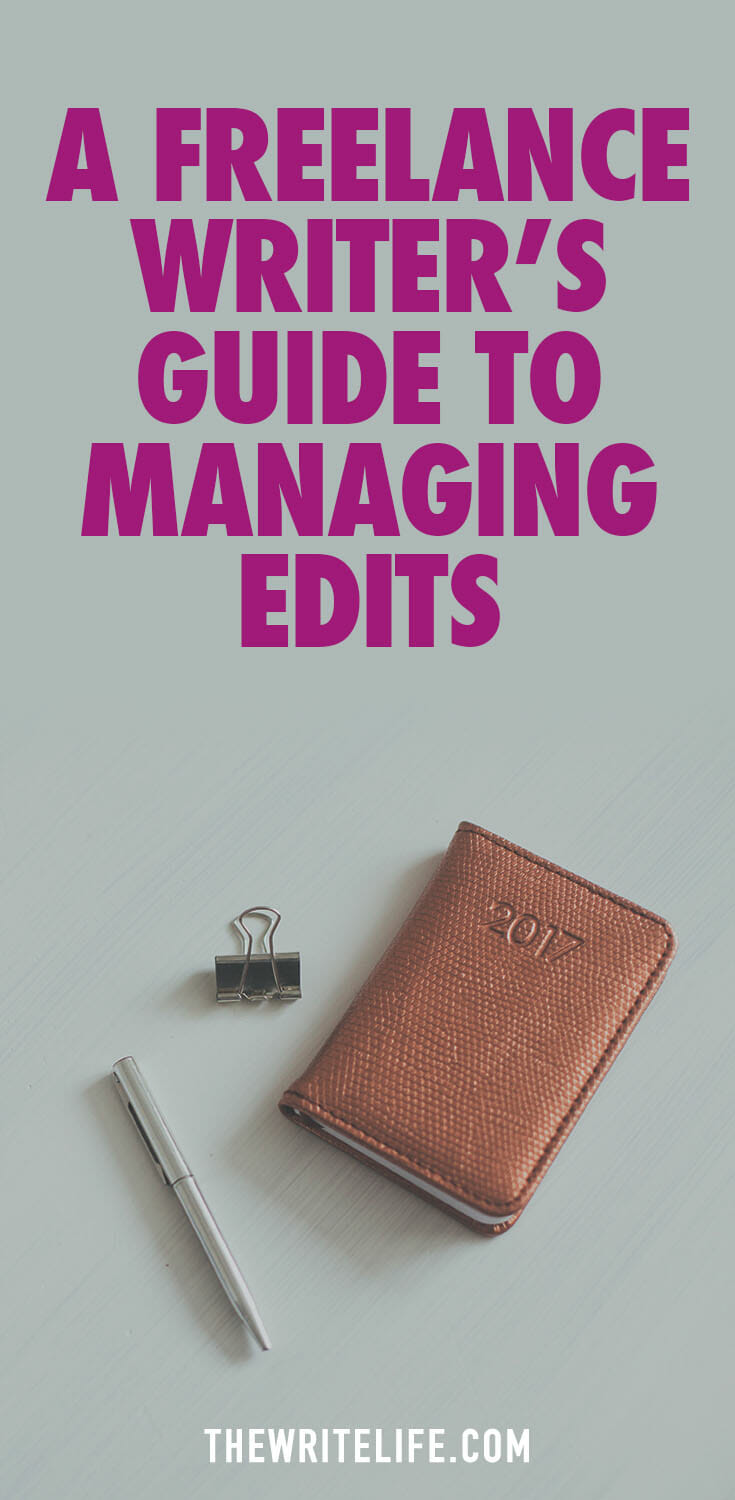I don’t know about you, but getting a request for edits puts somewhat of a damper on my day.
First, there’s dealing with the rejection that my article wasn’t as perfect as I thought. Then, there’s dealing with another personality who thinks they know better than me. Finally, there’s the time and energy I have to cut out of my day to deal with the changes that need to be made in order for my article to be considered ready for publication.
Of course, these reactions all glaze over the positive aspects of editing.
Like the fact that the editor probably knows a lot better than me what the publication’s audience likes, and the fact that they also have industry expertise to contribute on top of mine. Or, there’s the fact that having another set of skilled eyes on my content can take it from OK to truly awesome.
Here’s the bottom line: Edits make content better.
Great content with your name behind it is one of the best inbound marketing tactics that a writer can employ. If you’re anything like me, you’ll need to get over these negative feelings you sometimes have around edits and embrace the possibilities that come with improving your writing.
The challenge comes back to dealing with unexpected edits, and fitting them into your day. But here’s the process I’ve started to develop for you to adapt as your own:
A process for managing edits
Editing comes into play multiple times during the article writing process. Before determining how to deal with article edits, it may be necessary to first define and break down your article writing process.
Personally, I like to break down article creation into three steps:
- Research and creating an outline that provides everything I need to write my first draft without using the internet. This is as much for preparedness as it is for productivity.
- Writing the first draft relatively quickly.
- Going back in and making the draft actually sound good, checking for spelling/grammar/agreement issues.
The remaining steps here involve the client:
- Sending in my edited draft
- Standing by for any edits, and making them when requested
- Repeating steps 4 & 5 if necessary until the piece satisfies the client

The self-editing process
During the editing process, I incorporate a number of self-edits. ere are a few self-edits I personally incorporate during my first round of edits, before sending the piece to the client.
- Spelling/grammar/agreement: These are some of the silliest mistakes I never want to make. Any editor will just think you’re lazy if you turn in a piece with these issues. A browser extension like Grammarly can help you to avoid the worst ones.
- Parallelism: This step involves making sure that subheadings make sense together, and making sure that I didn’t use a period on one bullet, but not another. A lack of parallelism is another thing that drives editors crazy when they find it, so I do my best to edit it out before they have the chance to!
- Fact checking: Sometimes I make assumptions during writing, knowing that it’s important to just get the draft done. I usually mark any facts I’m not sure of (or that need sources) so that I know to go back in and check after writing my first draft.
- Read aloud: You’d be amazed by how much weird phrasing I catch during this critical step. If you’re just reading for edits in your head, you’ll lose out on catching some subtle nuances that weaken your piece.
Becoming a better self-editor
Up until now, we’ve just covered the basics of self-editing. But dealing with article edits is something that you have to be constantly working to improve in order to lock down the best freelance writing jobs.
If you keep making the same mistakes over and over again, an editor will assume that you’re not teachable, and that they’d rather not deal with the extra work your articles require before publication.
When it comes to improving your craft, first make sure you’re doing your part. There’s a distinct difference between an amazing article that could be made a bit better with edits, and a crappy article that needs a complete overhaul to be somewhat useful.
Become self-aware of your writing issues by analyzing the edits people tend to ask you for. Are they consistently about the same types of things? Are you ignoring specific things they’re asking for in the style guide? If the answer to either question is “yes”, guess what — you’re the problem.
Again, a process can be helpful when it comes to dealing with edits for each specific/consistent client. When a client asks for changes, make sure to save them for your future reference. Create an Evernote document that you can refer back to, ideally before turning in subsequent assignments. If your client has a style guide, give it a brief look before starting your assignment, and again before turning it in — especially if the relationship is new.
How edits fit into your schedule
Finally, set aside a specific day and time to deal with edits. On the front end of your article creation (AKA, before you send it into the client for the first time), you’ve ideally put a day between drafting and editing, so you can come into the topic with a clearer mind.
If edits are requested after you turn in the article, try to resist the temptation to tackle them right after getting an email from your client. Instead, pick a specific time over the next few days where you have nothing else scheduled, to avoid breaking the flow of whatever project you’re currently working on.
No client should expect a 24 hour or less turnaround on edits unless that’s something you’ve specifically stipulated in your contract. If they want a rush, they should expect to pay as such. That said, depending on the nature of the article, you should aim to deliver within the next few days — a whole week may reduce the timeliness of your topic, or hurt the client’s posting schedule.
I personally try to aim to get edits back within three days or so, unless the client specifically tells me there isn’t a rush. The most important thing is that you and the client are on the same page about edits. If you don’t know when they want them back, ask!
No matter how you go about approaching edits, if you know a client typically comes back asking for them after you turn in an article, automatically schedule in some time to take care of them within the week. This will help you to create a process around dealing with them, instead of letting them run your schedule.
Communication is key when it comes to dealing with clients and edits. If you’re going to be working with someone for the foreseeable future, you need to be direct about making the editing process work for you. So take charge and define where and how you need edit suggestions to take place.
The thought of dealing with article edits doesn’t have to evoke panic if you’ve taken the time to put a process in place for dealing with them. Think of edits as a way to improve the public perception of your work, which will come in handy as you’re pitching new clients and growing your freelance writing career.
What are your best tips for handling article edits as a freelance writer? Leave your thoughts in the comments below!







